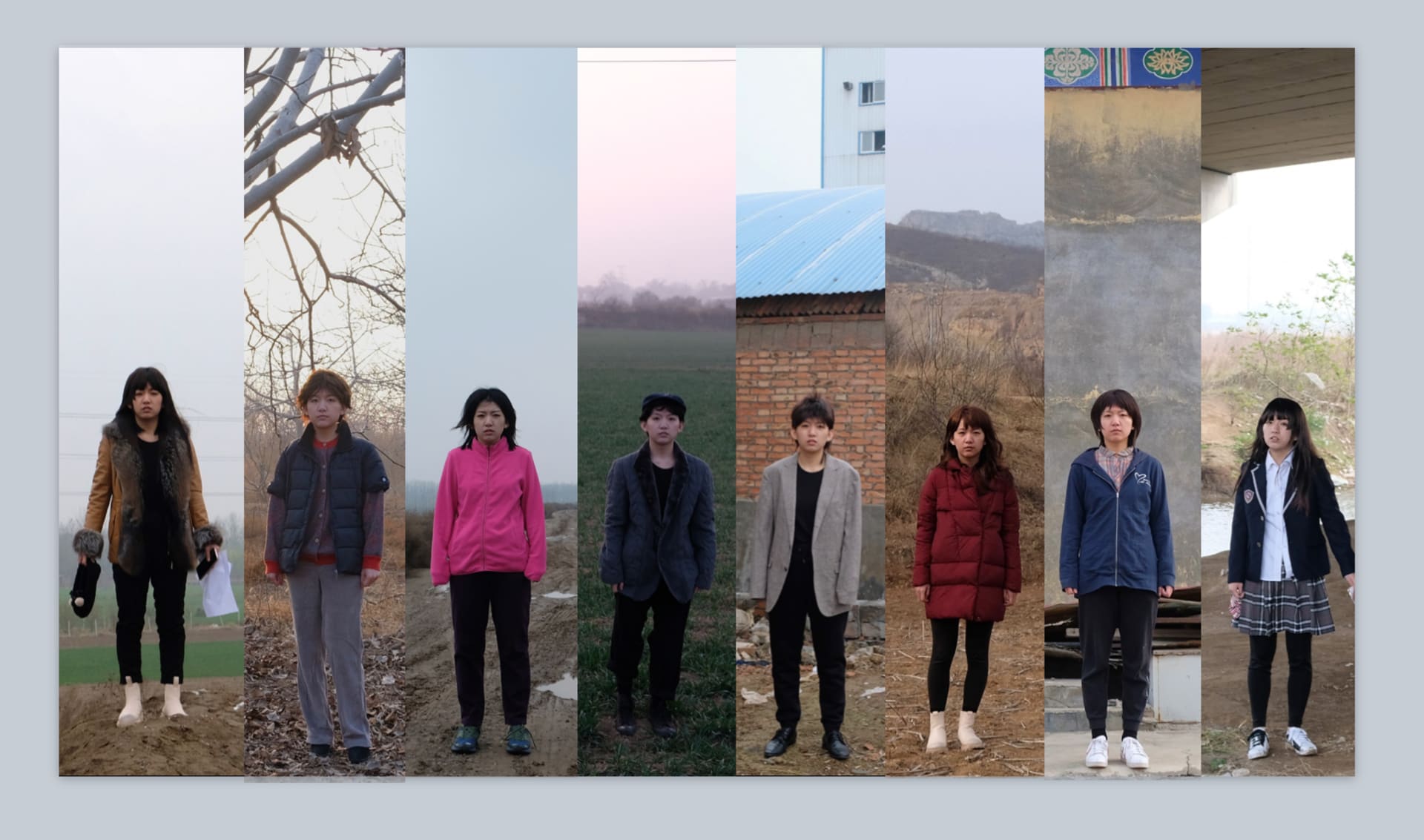Yana Jiao is a female performance artist from China. Yana's works tend to combine performance art and landscape, use her own body implies some broken stories and subtle moods. Yana's research focuses on the relationship between humans and subjects, landscape and society, objective and subjective. She believes our times prefer images to substance, prefer copies to originals, prefer performance to reality, and prefer appearance to existence. For this age, the sacred is only an illusion, the secular is the truth. She thinks the artist's task is to re-integrate the broken and burned pieces, create the most sincere works, and understand what is really needed in this era.
Jiao Yan


In the work 'Know You by Your Disappear', she imitates the appearance of the missing people establishes resonance with the audience in a way of disappearing scene reproduction. There are many lovely people in the world that we don't know. Yana expresses her feelings of knowing a stranger through descriptions in this work.
In the work ‘In the Living World', Yana uses a flashlight as a prop to show her perspective construct a scene of the milky way based on the real tiny landscape. At the same time, she uses scattered words and poems to tell the story here.
Her work starts from an engagement with text that is treated through performance and film. Both films deal with the tension between the visible or what is hidden and what is revealed.
After seeing a lot of search notices, Yana wants to record the missing person's farewell with her own body. The artist gets to know them by reading their descriptions and feels their emotions by bringing her body into their lives. She reproduced the disappearing scene to tell the audience that they have experienced the pain of life, and they may need our attention. She notices that many negative words are frequently used in these text descriptions, for instance, big nose, hunchback, lame foot, and dim-witted, etc. She asked why are the so-called objective descriptions in the missing people notices always recognized as flaws or deficiencies in our normal life. She tries to use this work to arouse people’s thinking and inspire them to think about the meaning, logic, and power structure behind what is considered normal.
Medium:
filmSize:
00:05:38The place of shooting is around an old garden in the center of Shanghai called Yu Garden. It used to be officials private garden in the Ming Dynasty, but now it's a ticket attraction. The government has re-planned the area and decided to transform it into a luxurious villas area, which means that all the residents here have to move to the suburb. In Yu Garden, architects built many sculptures of gods at the top and corners of pavilions and buildings, such as Phoenix, dragon, and pine trees, which means good luck.
The artist found a paragraph written by a resident on the board with chalk in a corner of a small alley, telling the story of his forced relocation. She shoots some of the keywords and puts them at the end of the video, which always has some metaphorical meanings in Chinese. These words are awe, morality, push, reality, punish, daughter-in-law, parents-in-law, deliberately misrepresent, guilty, ant nest, corruption, contradiction, on earth.
The artist visited here as an outsider. She wrote a poem about the changes here and put it in the video. She thinks no matter how times change, people living here will always be blessed by the gods here. She uses her own perspective to find some beautiful tiny landscapes and show them in a romantic way, which implies that we can choose to live in this world in a romantic way.